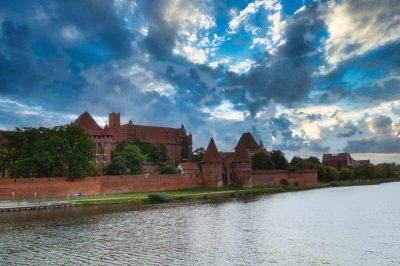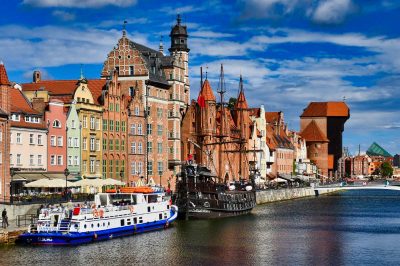Poland’s north is one of the country’s most popular travel regions and is just a stone’s throw from the German border. The three voivodeships (comparable to the German federal states) of West Pomerania (Zachodniopomorskie), Pomerania (Pomorskie) and Kajawsko-Pomorskie (Kujawsko-Pomorskie) together with the German Western Pomerania form this unique region, where you will encounter numerous natural beauties, old Hanseatic towns and the beautiful Baltic Sea.
These are the top 10 sights in Pomerania
In this article, we would like to introduce you to the top 10 sights in Pomerania in a little more detail. If you are planning a trip to Gdansk, the most important city in the region, you will find a list of the most beautiful sights here. And if you click here, you can go straight to our practical tips for planning your trip.
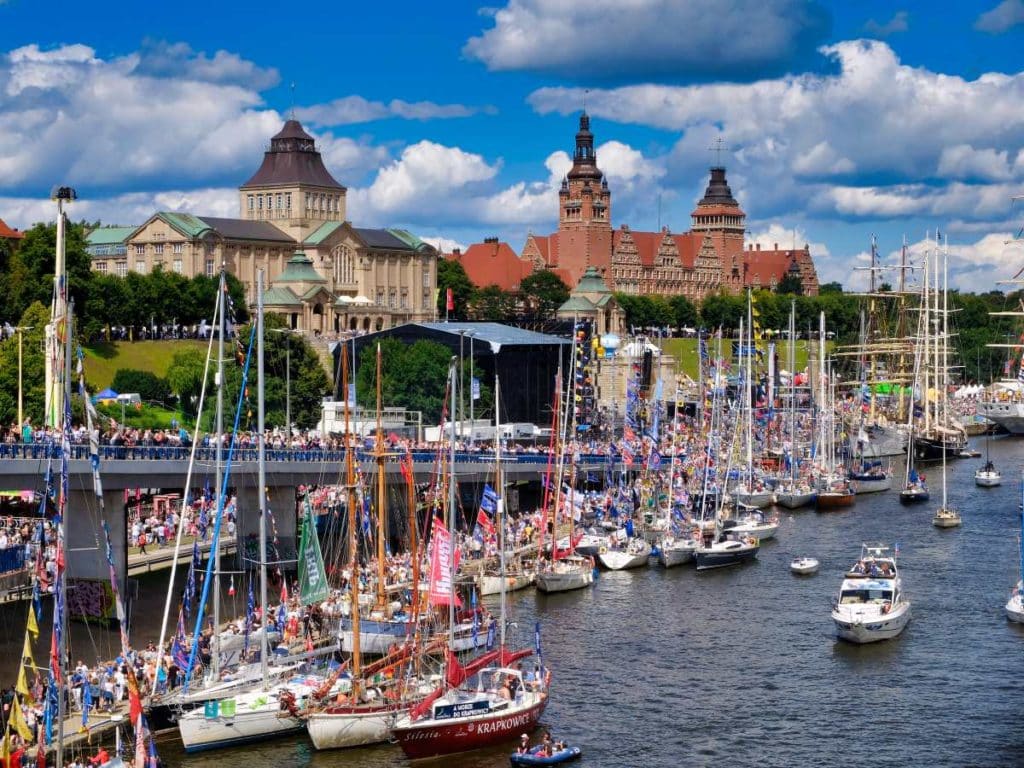
Szczecin (Stettin)
Poland’s western city of Szczecin is located just five kilometers from the German border and is an ideal destination for a day trip due to its proximity to the border. Despite its 400,000 inhabitants, the port city on the West Oder is relaxed and quiet. The most important sight is the Renaissance-style Szczecin Castle, the former residence of the Dukes of Pomerania. St. Jacob’s Cathedral in the brick Gothic style is one of the largest churches in the region and only received its new spire a few years ago.
Architecture fans should definitely pay a visit to the Philharmonie. The sensational building, which opened in 2015, has unique acoustics and has won several major architectural awards. Personally, however, I like the Hakenterrasse best, an ensemble of several buildings. From here you have a wonderful view of the water. It goes without saying that Szczecin belongs on every list of the most beautiful sights in Pomerania!
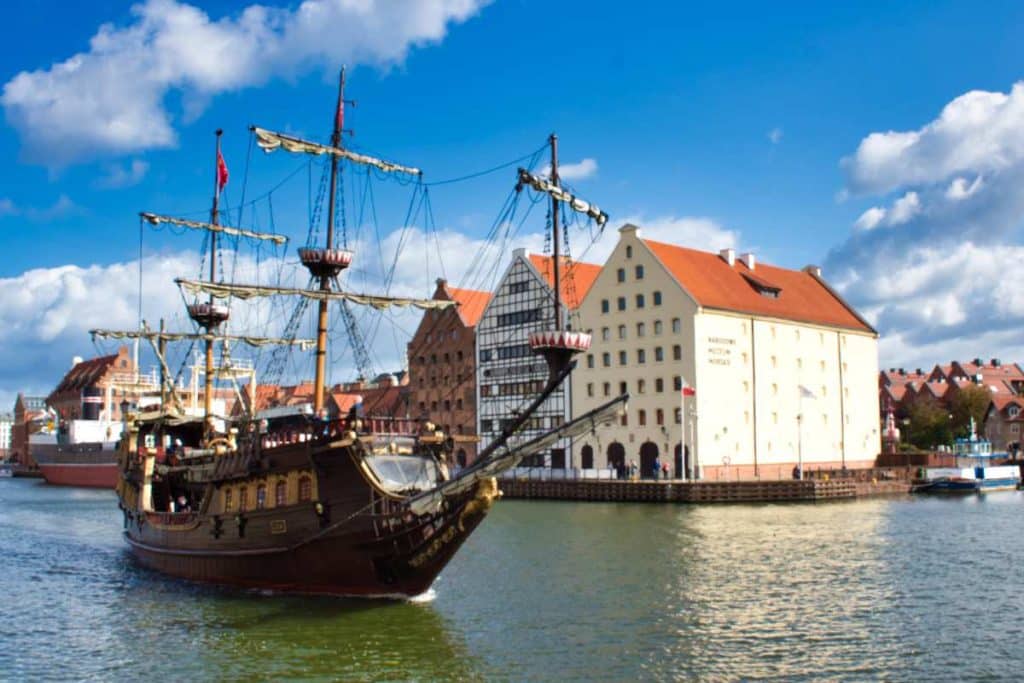
Gdansk (Gdańsk)
Gdansk exudes maritime flair like no other Polish city. Once the pride of the Hanseatic League, today tourists from all over the world come here. Some follow in the footsteps of the writer Günter Grass, who created a literary monument to the city in his Gdansk Trilogy. Others come here for the beautiful old town. But Westerplatte, which became a symbol of Polish resistance against the Germans at the beginning of the Second World War, is also one of the highlights of a visit to Gdansk. This is also where the fall of communism in Poland began, when the Solidarity trade union (Solidarność) led by its leader Lech Wałęsa challenged the power structure in Poland. For these reasons, Gdansk is perhaps the most exciting Pomeranian attraction of all!
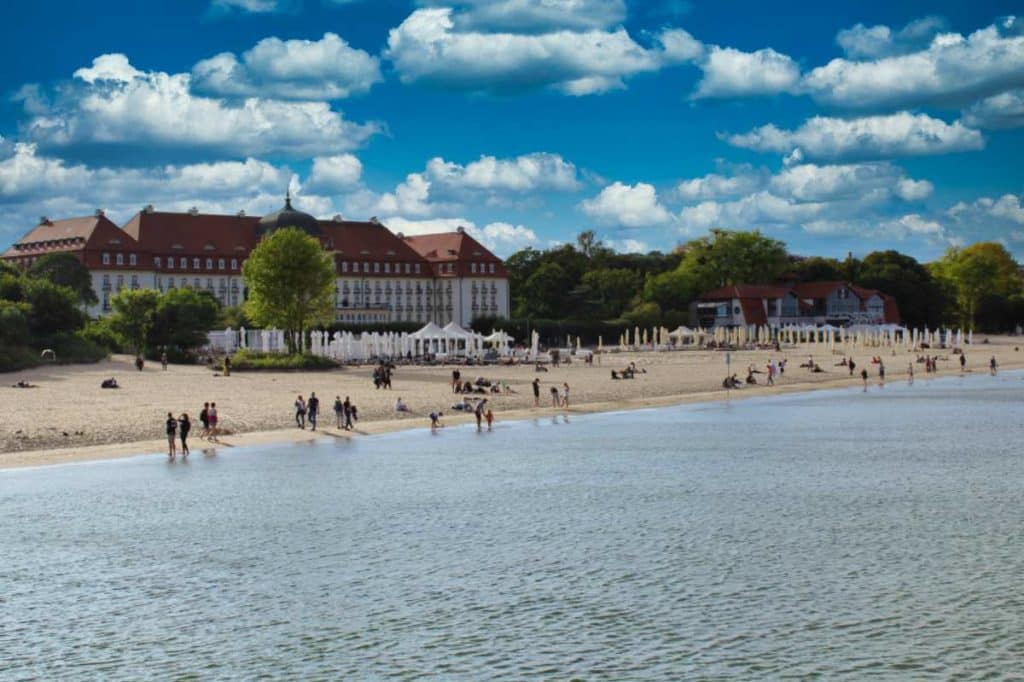
Zopot (Sopot)
Gdansk is impressive in itself, but what I find most beautiful is that the city has grown together with Zopott and Gdynia to form the so-called Tricity and that all three places have a different character. Zopott is a sophisticated and chic seaside resort that attracts the country’s rich and famous. The most important sight is the pier. At over 500 meters, the wooden pier is the longest of its kind in Europe. There is even a restaurant on the wooden jetty, and you can also go on excursions to the Hela peninsula from here. After a visit to the pier, you can relax on the beach or take a look at the Crooked House, a building erected in 2004 that is so crooked that it seems to be about to collapse.
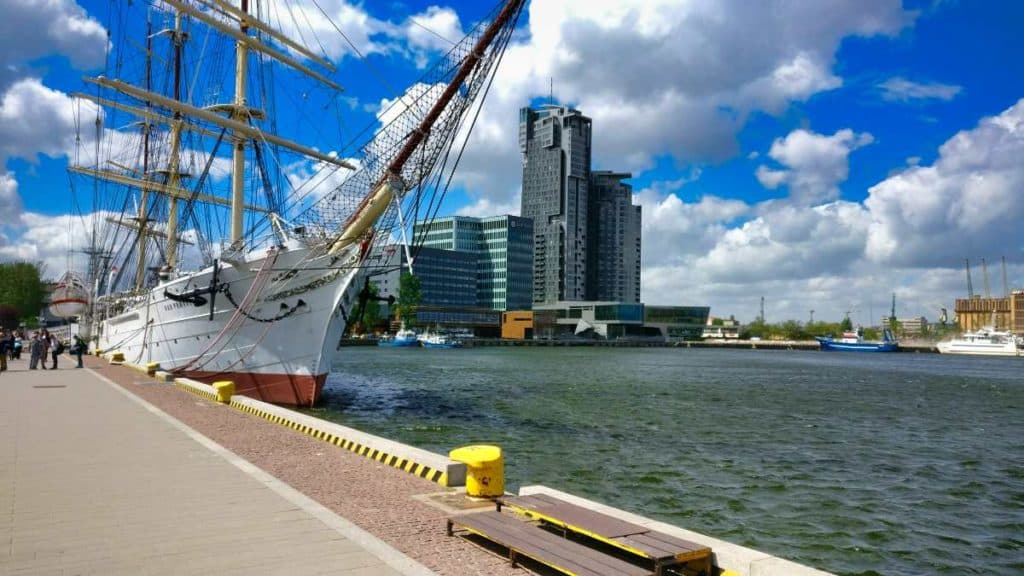
Gdynia (Gdynia)
A good 100 years ago, Gdynia was a sleepy little town. After Poland gained independence after the First World War, Gdynia became the country’s most important port city within a few years. The city was heavily destroyed during the Second World War and then rebuilt. Here you will find many socialist architectural gems that are currently applying for UNESCO World Heritage status, as well as the Skwer Kościuszki and Rady Europy Park, a wonderful place to relax. But the most beautiful part is the harbor, where you can admire tall ships and Polish navy vessels up close.
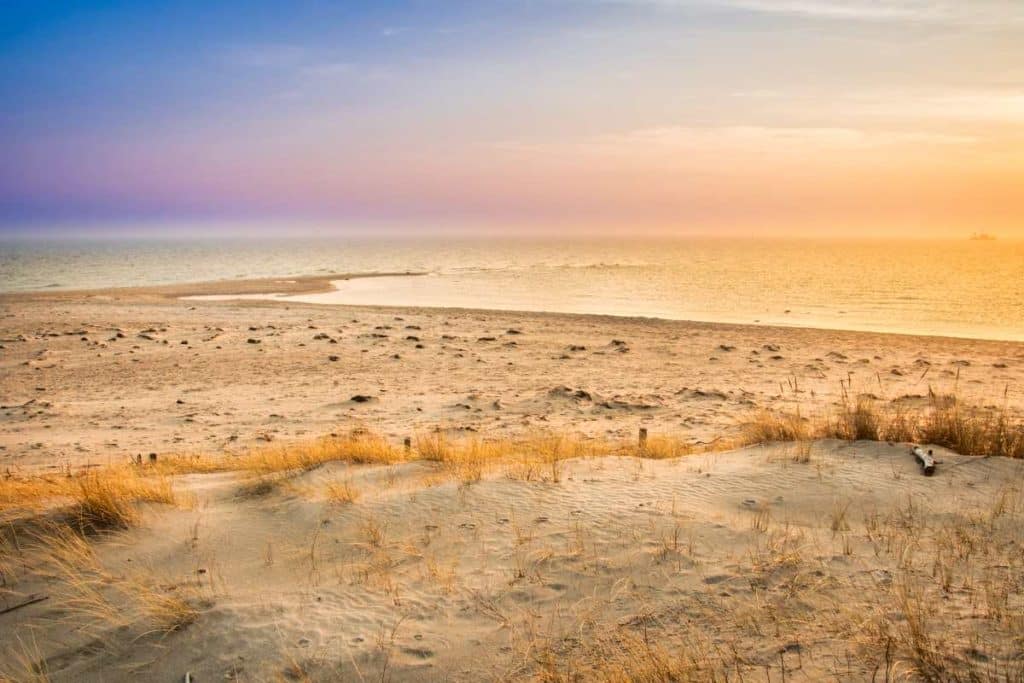
Hela Peninsula (Hel)
The Bay of Gdansk is separated from the Baltic Sea by a 34-kilometer-long headland. Beautiful beaches, a picturesque lighthouse and, above all, the famous seal station at the harbor of the village of the same name attract countless tourists to Hela year after year.
The peninsula is also ideal for kitesurfers, but the best thing about it is the long walks you can take here. Hela can be easily reached from Gdansk, Zopott and Gdynia by ferry or excursion boat, but you can also drive here by car. Guided tours are also available.
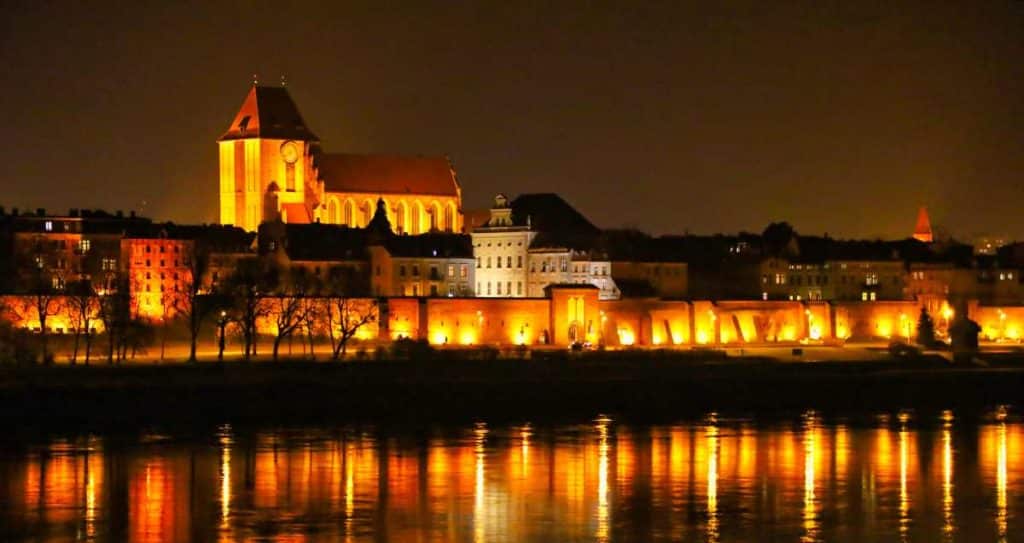
Toruń (Toruń)
Toruń is definitely one of the most beautiful cities – not just in Pomerania, but in the whole of Poland. Toruń is a total work of art with countless brick buildings that have stood the test of time and have been declared a UNESCO World Heritage Site. Countless museums and the wonderful panoramic view of the city from the other side of the Vistula make the birthplace of astronomer Nicolaus Copernicus an ideal destination for a short trip. However, the city is not only famous for its famous son, but also for its Toruń gingerbread. The local specialty is available in every shape and taste imaginable. There is even a museum dedicated to it.
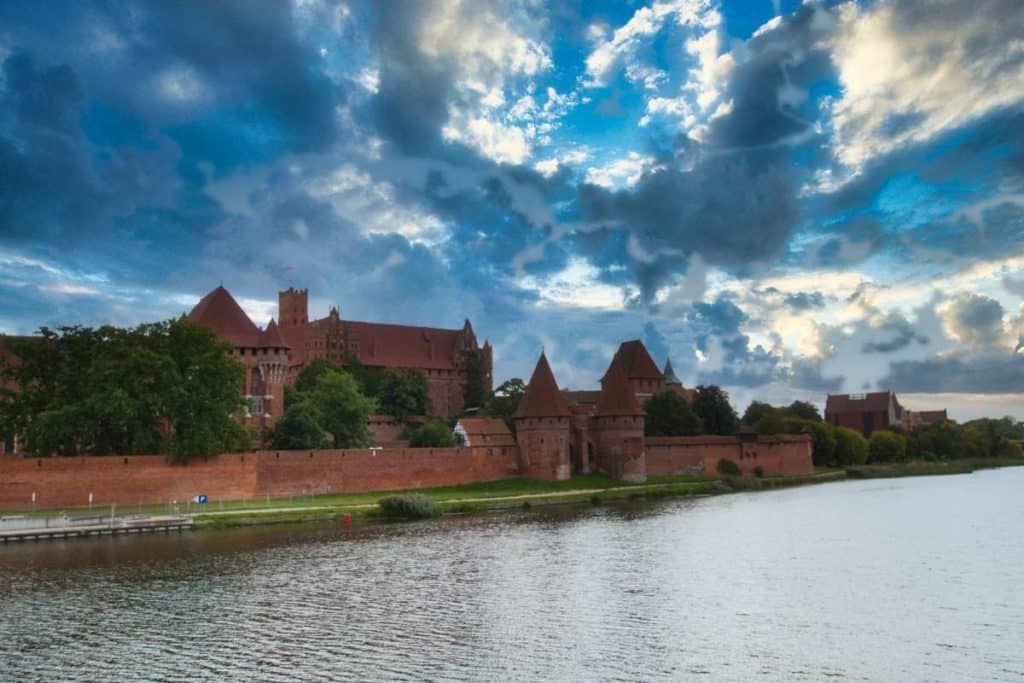
Marienburg (Malbork)
The small town of Marienburg, Malbork in Polish, in Pomerania has just 40,000 inhabitants. It’s hard to believe that the largest castle in Europe is located here. Here on the Nogat River, the Teutonic Knights built a fortress in the 13th century that resembles a small town within a town. No wonder Marienburg Castle is a UNESCO World Heritage Site. Today, you can visit most parts of the complex on a tour lasting several hours. The panoramic view of Marienburg Castle from the other bank of the Nogat is also impressive. Marienburg Castle is therefore not only an exciting excursion destination, but definitely one of the top 10 sights in Pomerania. Click here for our article about Marienburg Castle.
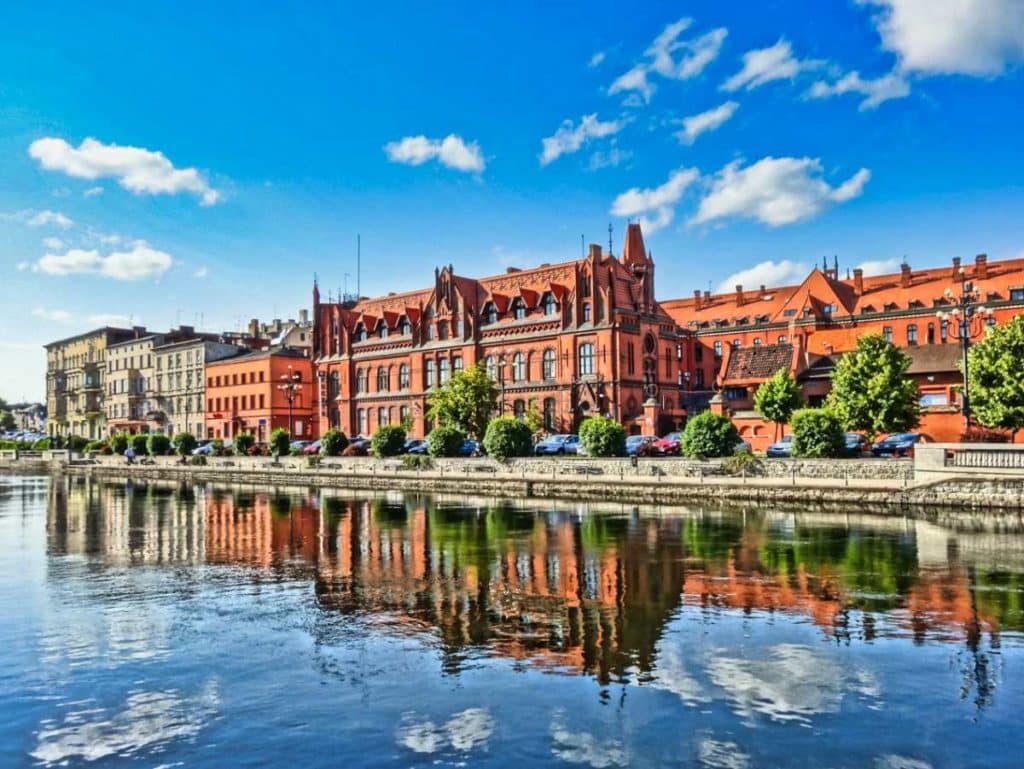
Bydgoszcz (Bromberg)
Together with Thorn, Bydgoszcz is the capital of the Kujawsko-Pomorskie Voivodeship. The city attracts far fewer tourists than its famous sister and is therefore something for real explorers. You will find the historic center on both sides of the picturesque river Brahe (Brda). On its banks and on the small mill island, there are not only beautifully restored half-timbered houses alternating with modern apartments, but also one of the country’s most unusual monuments, the tightrope walker: Since Poland joined the EU in 2004, a figure has hovered over the river here, symbolizing the transition to a new era.
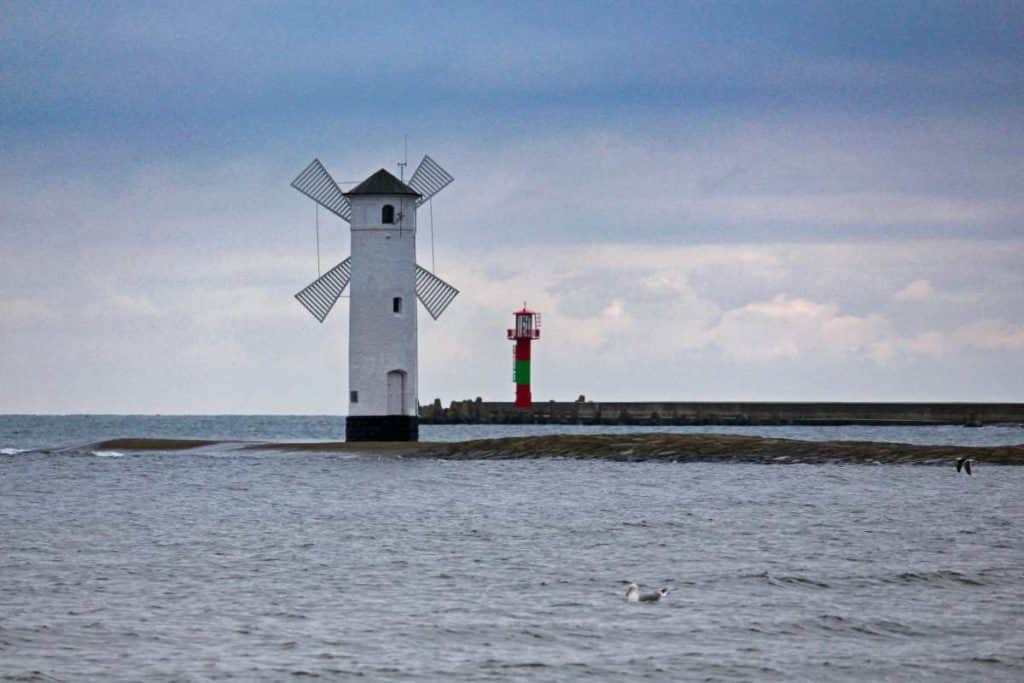
Wolin and Swinemünde (Świnoujście)
The little sister of Usedom, which we have already introduced to you together with Wolin and Swinemünde in a separate article, is just as interesting as its German counterpart and has beautiful beaches.
In Swinemünde, you can watch the River Swine flow into the Baltic Sea and come across several Prussian forts that will add variety to your visit. You can find the highlights of Wolin and its German sister Usedom in our guest article by Martin Brand.
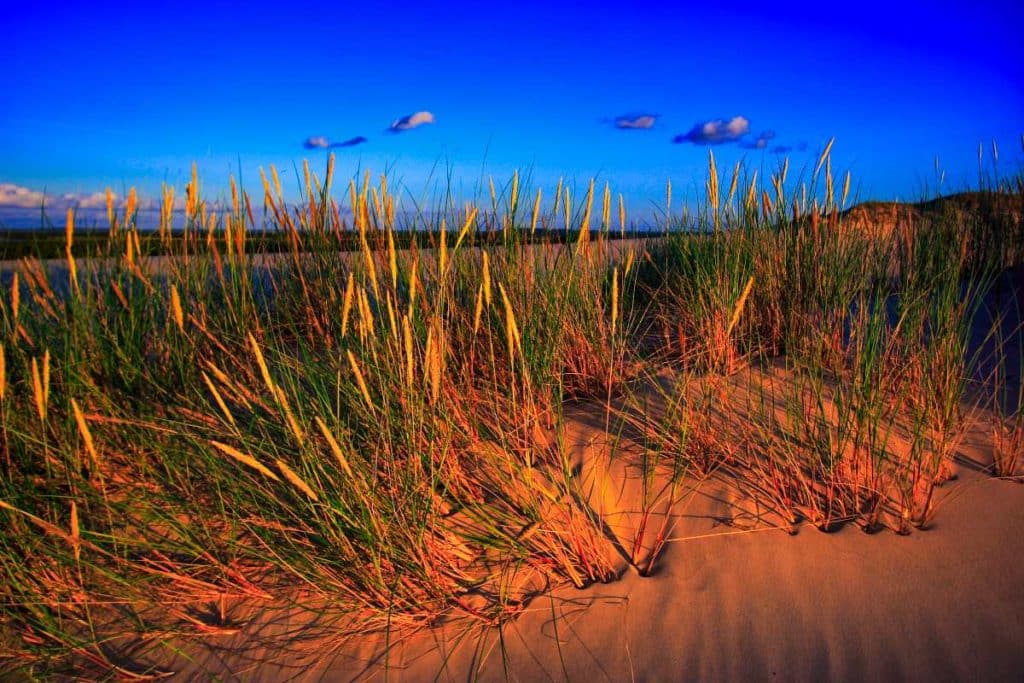
Słowiński National Park (Słowiński Park Narodowy)
The Slowinski National Park in northern Poland covers over 18,000 hectares, making it one of the largest national parks in the country. Unique dune landscapes with shifting sand dunes, spits formed by glaciers, coastal lakes and wide beaches have earned it the title of a UNESCO biosphere reserve. But the wildlife is also a special feature: Countless bird species, raccoon dogs, protected plants and much more provide variety, relaxation and exciting discoveries. Definitely one of the most special sights in Pomerania.


